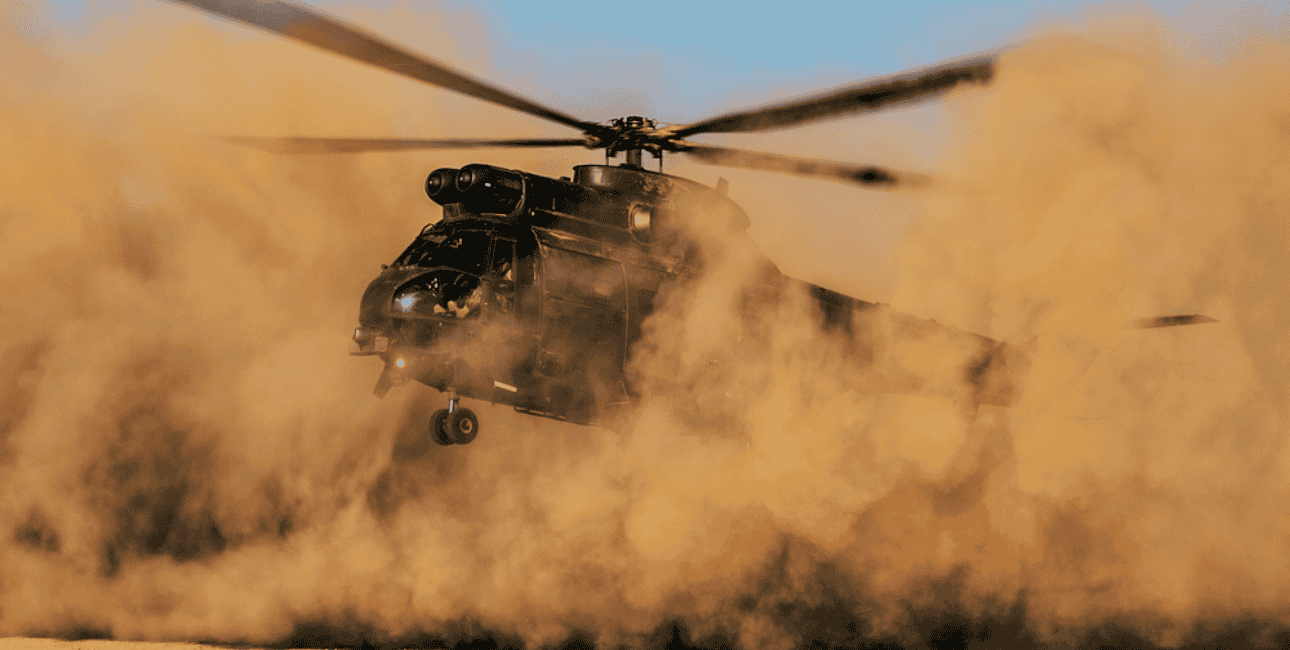After 54 years of continuous service, Britain’s Royal Air Force’s (RAF’s) Puma fleet retired on March 31, 2025, concluding a remarkable career that began in 1971. The farewell flights on March 26 and 27 saw Puma HC2s soar over the United Kingdom and Cyprus, with additional flypasts in Brunei, marking the end of an era for this versatile helicopter.
The UK flypast, dubbed WARLOCK flight, featured three Puma HC2s departing from RAF Benson in South Oxfordshire, England, flying over significant sites like Northern Ireland, Cyprus, and Brunei.
In Cyprus, No. 84 Squadron conducted its own farewell over RAF Akrotiri, reflecting the Puma’s diverse roles in military operations, peacekeeping, and humanitarian missions.
Wing Commander Nick Monahan, commanding officer of No. 33 Squadron and Puma Force Commander, emphasized that the flight “reflects the rich history and contributions that the Puma has made during its time in service.”
The SA 330 Puma was developed by Aérospatiale (now Airbus Helicopters) in collaboration with Westland under a 1967 UK-France agreement. It is a medium-lift helicopter with a maximum takeoff weight of 7,400 kg and was designated Puma HC Mk 1.
The HC2 variant featured modern avionics, making it a key asset in operations like UK exercises in Kenya (2009-2011), Hurricane Irma relief (2017), and COVID-19 aid under Operation Rescript (2020).

Powered by two turboshaft engines, it could cruise at 309 km/h with a range of 580 km. The spacious cabin accommodated up to 16 passengers, 12 fully equipped troops, or 2 tons of cargo.
The Puma quickly became a versatile and indispensable asset in conflicts, peacekeeping operations, and humanitarian missions. Notably, it supported British forces during the troubles in Northern Ireland, conducting evacuations and rescue operations amidst the conflict.
The Helicopter That Flew for Both Sides
One of the most ironic chapters in the Puma’s history unfolded during the Falklands War of 1982; the Argentine deployment of SA 330 Pumas highlighted the absurdity of war, as both sides utilized the same helicopter type.
Argentina initially deployed Pumas from its Army and one from the coast guard to transport troops and supplies across the islands and from Navy vessels.
On April 3, 1982, an Argentine Army SA330L Puma, AE504, was deployed alongside an Aerospatiale Alouette III to land troops in South Georgia. During the operation, small-arms fire from British Royal Marines brought down the Puma.
Post-war, the British captured one of these downed Argentine Pumas. Rather than scrapping it, they refurbished it and integrated it into RAF service, turning enemy assets into their own.
From War Zones To Peacekeeping
Beyond Northern Ireland and Argentina, the Puma was a key player in global operations. In the 1990s, it supported peacekeeping efforts in the Balkans during the NATO-led Kosovo Force (KFOR) mission, transporting troops and maintaining supply lines in post-conflict zones.
The helicopter also provided logistical support and conducted rescue operations during the Iraq War (1991 and 2003) and in Afghanistan from 2015 to 2021, adapting to shifting demands from combat to stabilization.
Peacekeeping missions by Puma helicopters leveraged their capacity to carry up to 16 passengers or 12 fully equipped troops in challenging environments.
The RAF Puma HC2 aided NATO interventions in the former Yugoslavia, while the Romanian Air Force deployed Pumas for UN peacekeeping in Mali, offering air support and troop transport in hostile regions.
A tragic example of the Puma’s peacekeeping role unfolded on March 29, 2022, when a Pakistan Army-operated Puma crashed in the Democratic Republic of Congo (DRC) during a United Nations Organization Stabilization Mission (MONUSCO).
Assigned to a reconnaissance mission in North Kivu province to monitor rebels’ March 23 Movement (M23), the helicopter, serial number UN-810, lost contact with MONUSCO near Tshanzu, southeast of Rutshuru, at around noon.
A search-and-rescue operation confirmed the deaths of all eight on board.
Pakistan, a major UN peacekeeping contributor, has relied on the Puma since the mid-1970s for troop movements.
The Congolese military accused M23 of shooting it down, a claim the rebels denied, and an investigation into the incident remains inconclusive. Former Pakistani Prime Minister Imran Khan and UN Secretary-General António Guterres honored the fallen as peacekeeping heroes.
Humanitarian Efforts
The Puma excelled in humanitarian missions, showcasing its versatility in delivering aid and supporting disaster-affected populations. The RAF deployed Pumas during the 2000 Mozambique floods and the 1988 Jamaican flash floods, transporting food, medical supplies, and personnel to isolated areas.
In 2017, Operation Ruman saw Pumas providing disaster relief in the Caribbean after Hurricane Irma.
The Puma’s ability to operate in extreme conditions—high altitudes, hot climates, and dense jungles—made it invaluable for evacuating casualties or delivering cargo to remote locations.
Ukraine & Beyond
During the Russo-Ukrainian conflict, Portugal contributed eight SA-330 Pumas to Ukraine in late 2024. Acquired in 1969, these Pumas were refurbished for Ukraine’s troop transport needs.
With the retirement of the Puma HC2, the RAF is transitioning to a new fleet, with six Airbus H145s set to replace them in Cyprus and Brunei. However, the long-term replacement for the Puma across the UK’s armed forces remains undecided, leaving a gap in medium-lift helicopter capabilities.
The fate of the retired Puma HC2 fleet also remains uncertain. While some airframes may be scrapped, others could be sold, repurposed, or transferred to allied nations or organizations.
Military helicopters are often donated for training, humanitarian efforts, or secondary roles, but the UK government has yet to confirm whether the Puma fleet will be used in this capacity or decommissioned entirely.
By ET Newsdesk




